
Musée Royal Du Congo Belge

Zoological hall at Musée du Congo - 'Palais des Colonies' in Tervuren. (before 1910)
The Museum was originally conceived by Belgian King Leopold II with an aim to promote commercial and public interest for the Congo Free State at the Brussels World's Fair in 1897. The Colonial section was set up at the 'Palais des Colonies' in Tervuren. Following its huge success, the temporary exposition evolved into a monumental project for a permanent museum, which became the Musée du Congo Belge. In 1952, by Royal Decree, the museum was renamed Musée Royal du Congo Belge and in 1960, following the independence of the Congo, the museum's name was changed to its current title: the Royal Museum for Central Africa, more commonly known as the Museum of Tervuren. After re-emerging from its 2013-2018 renovation the museum enters a new chapter now branded as the AfricaMuseum of Tervuren.
In its 100 years of history the Royal Museum for Central Africa has developed from a typical colonial institute into a museum and important study centre for Central African research and collections, including all aspects of cultural anthropology and the natural science of botany, geology, and zoology.
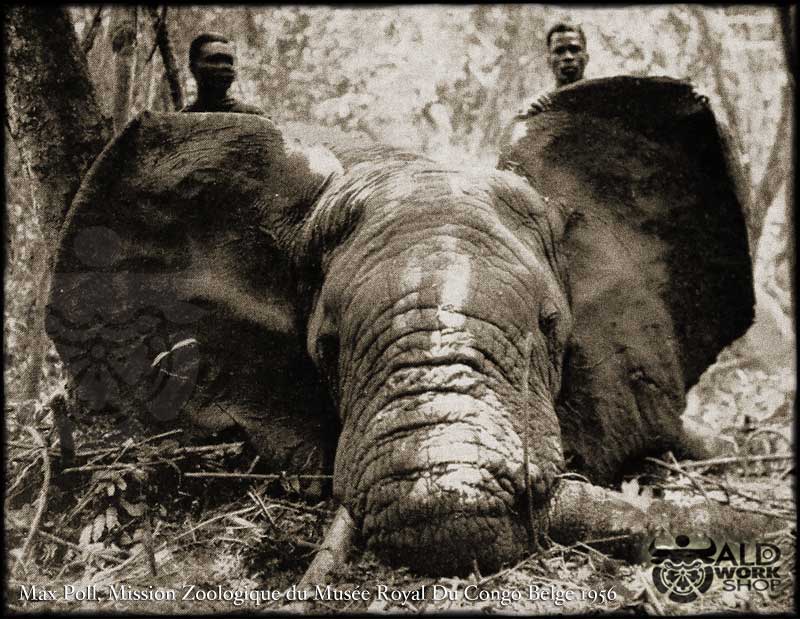
The giant bull Elephant of the Bushimaie Savannah, mounted in the public halls of the Museum (height at the withers 3 m 40, height of the ear 1 m 80).
In July 1956, The Royal Museum of the Belgian Congo embarked on a zoological expedition, led by the noted ichthyologist Max Poll, to Kasai, Ituri and Haut-Uele. Its main objective was to collect good-quality specimens of a variety of principal game animals, which would subsequently be mounted for museum displays. A fair number considered as typical African wildlife species, amongst the most majestic, a giant mounted Bush Elephant, were designated for exhibition in the "Pavillon de la Faune" of the Belgian Congo and Ruanda-Urundi section at the Brussels Universal and International Exhibition, named Expo 58.
A typical mammal-collecting field trip involves a great deal of preparation, a tremendous assortment of supplies and equipment, proper field care of specimens and a dedicated crew of people. Furthermore, authorities in Africa had to be contacted for dates, hunting licenses, permits, and professional hunters and trackers engaged. To ensure the success of the mission Max Poll was assisted by the taxidermists Armand Opdenbosch and Louis Poelman, and marks the first time that a scientific mission organized by the Museum was supported by technical staff. They were in charge of data collecting, documenting and preparing large game animals in the field, namely of seeing to it that the skinning would be carried out correctly to suit the taxidermists' and museums' purposes. For this purpose Gerald Best, the owner of the famous taxidermist company, Rowland Ward Ltd, provided step by step directions and practical instructions on preserving specimens in the field.
The Elephant was found on the River Bushimaie in South Kasai. It was an old solitary bull of exceptional dimensions, that ravaged the villagers' cassava plantations at night, and disappeared during the day in the nearby forest, where it eventually was shot. The mighty beast fell against a huge tree; this was too though to be cut down, and consequently some eight hours' work were needed to drag the animal clear with tackle. The naturalists then turned to the formidable task of skinning the dead elephant and drying the skin, which took many days to accomplish. Once dried, the skin and the skull with tusks and bones were shipped to Melsbroek, and then flown to London, where Rowland Ward Ltd., one of the leading taxidermists of his day, completed the processing and assembly of the pachyderm.
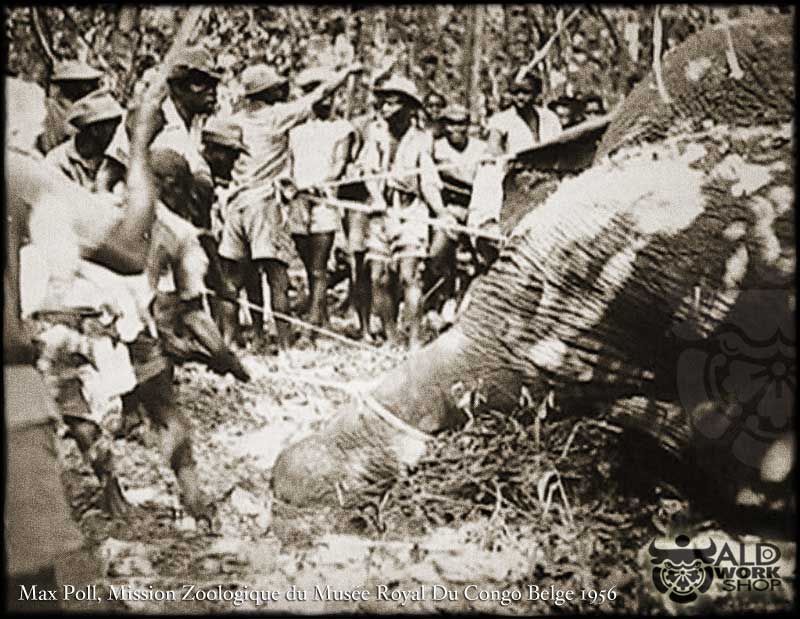
L’Expédition Zoologique du Musée 1956, Max Poll.
Source – Max Poll, Une Mission Zoologique Taxidermique du Musée Royal Du Congo Belge 1956
Congo-Tervuren, Volumes 3-6, Page 35-40, 1958
1958 Brussels World's Fair
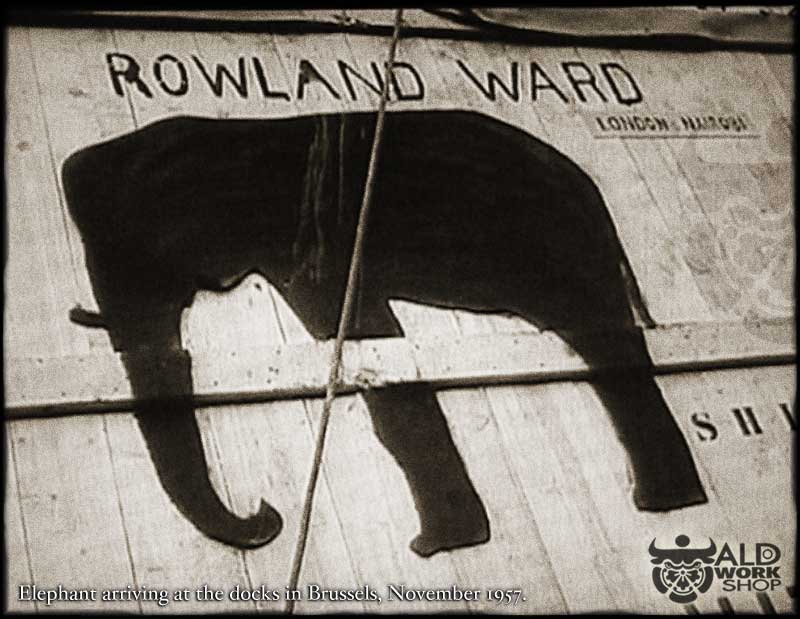
LONDON : Monday 25 November 1957 (telegram)
Elephant successfully loaded and moved to the docks, G. Best, Manager Director Rowland Ward
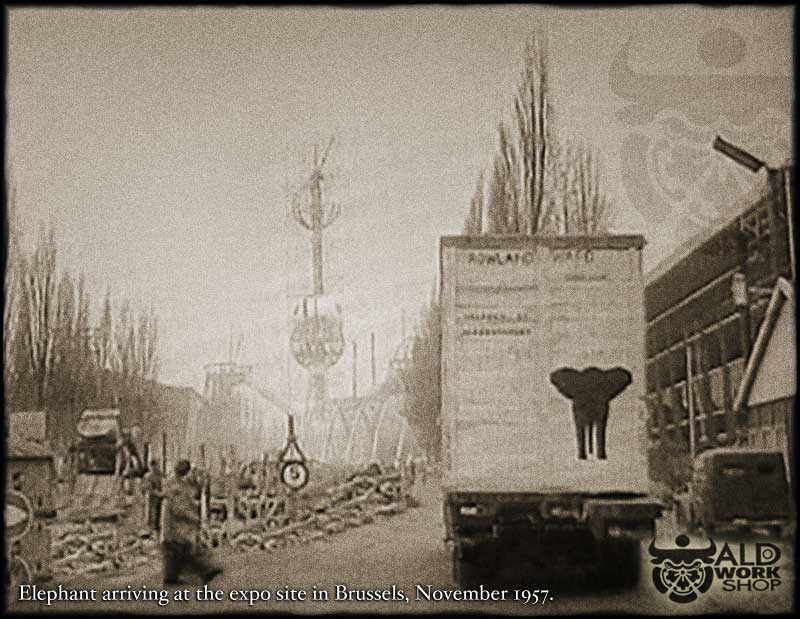
Elephant arriving at the expo site. Atomium under construction, 1957.
BRUSSELS : Thursday 28 November 1957
Le permier animal empaillé, un éléphant est arrivé au chantier.
Rowland Ward supplied mountings to museums all over the world, including the Museum of Tervuren. Documents, photos and a collection of letters between Rowland Ward Ltd. and the Museum can be found at the Museum's Archives, such as Ward's detailed instructions for proper field care, agreed purchase orders and letters of transactions between Ward and the different keepers, giving prices and showing precisely the kinds of specimens the taxidermist was producing.
The giant Kasai elephant, an example of Ward's superb taxidermy work, is one of a number of large mammals which were mounted for the Brussels World's Fair, Expo58 and was held from 17 April to 19 October 1958.
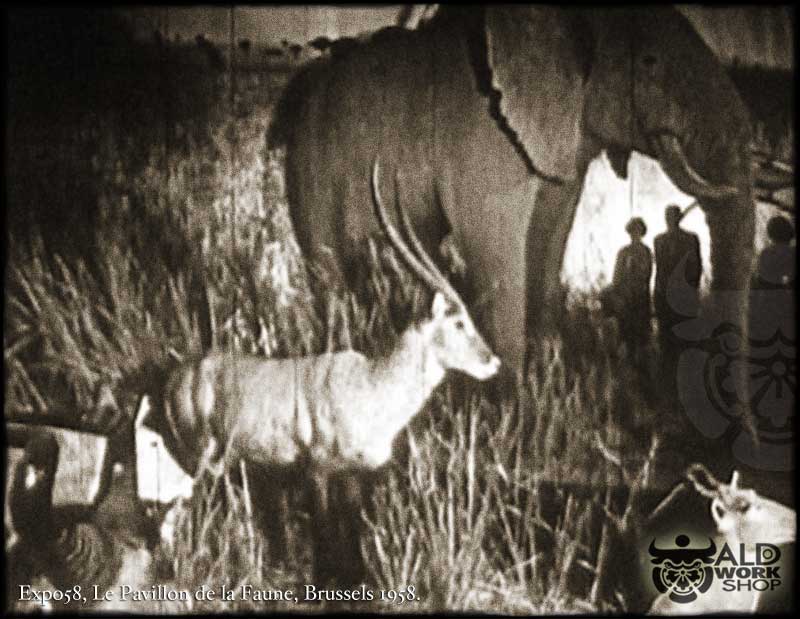
Belgian-Congo section, Le Pavillon de la Faune, Brussels 1958.
The exhibition featured Congo's most important and rare animals in habitat groups of the four major ecological environments in the Congo: the Southern and Northern Savannah, and the Central and Eastern Forest-Savannah. The various animals were placed against a background of large photomontages, enlivened with jungly plants to simulate their wildlife habitat, introducing the mysteries of the African bush.
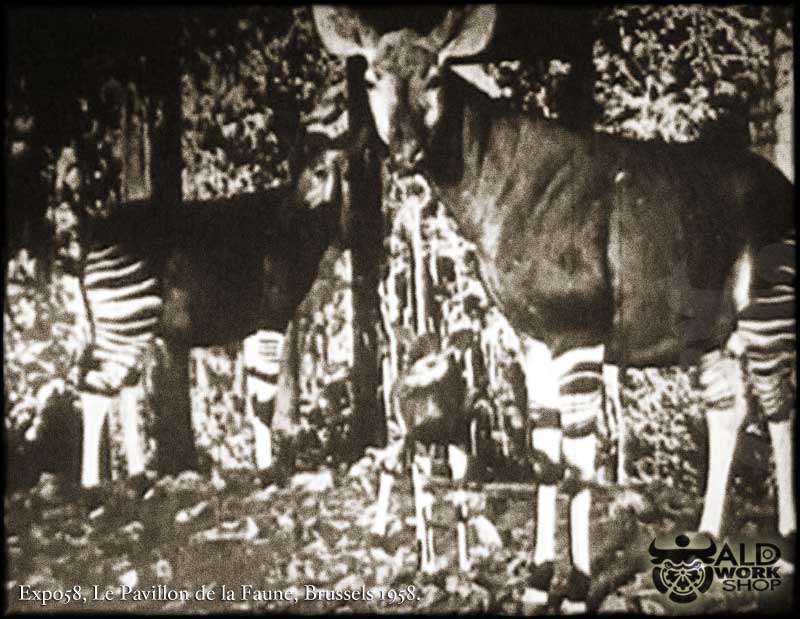
Belgian-Congo section, Le Pavillon de la Faune, Brussels 1958.
Royal Museum for Central Africa 1959 - 2013
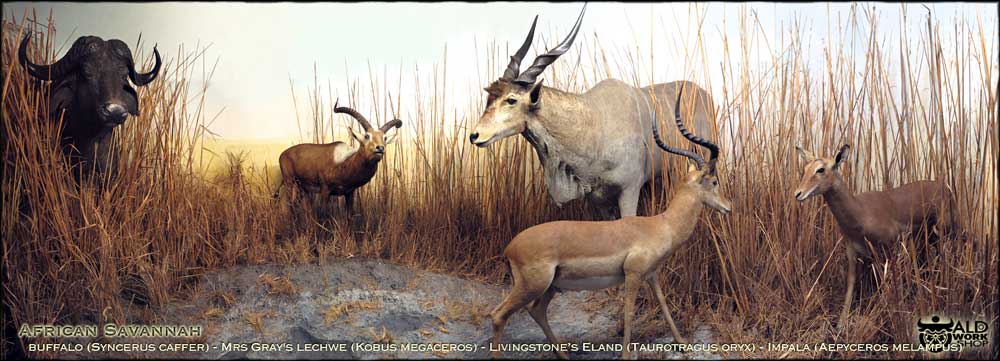
Habitat diorama African Savannah – Royal Museum for Central Africa (dismantled 2013)
When the World's Fair closed on 19 October 1958, the animals transfered to the Musée Royal du Congo Belge, which would ultimately become the Royal Museum for Central Africa in 1960. As part of the museum's exhibit modernization program a series of natural history dioramas were created, presenting the taxidermied specimens in an illusionary wildlife habitat arranged according to the geographical origin of the animals.
The construction of 15 dioramas began in 1959, under the direction of Armand Opdenbosch, Chief Technician and taxidermist (1929–1977), with a final installation in 1972. Max Poll, Curator of the Department of Zoology (vertebrate section) and a skilful watercolourist, painted the backgrounds and designed the scenery elements.
The habitat dioramas remained on view for almost a quarter of a century until they were destroyed in 2013, when the museum embarked on an extensive major refurbishment.

DIORAMAS - PALAIS DE TOKYO, Exhibit Catalogue, Edition Flammarion, 2017
"DIORAMAS" - 2017. A major exhibit – staged at Palais de Tokyo (Paris) and SCHIRN (Frankfurt) - dedicated to the cultural history of vision, focuses on the diorama, which is used to reconstruct and realistically stage events, stories, and habitats with the aid of various means, and explores the diorama as an unexpected source of inspiration for contemporary artists. At the crossroads of art, cinema and theater, this cross-disciplinary exhibition is the first large survey to recontextualize the diorama with a renewed approach to the history of spectactorship, including the influence of science and technology, popular culture, fun fairs and exhibitions.
The diorama, invented in the nineteenth century by the French painter and photography pioneer Louis Daguerre as a playhouse enlivened with light effects, it, as a glass showcase became the presentation form par excelence for natural history museums.